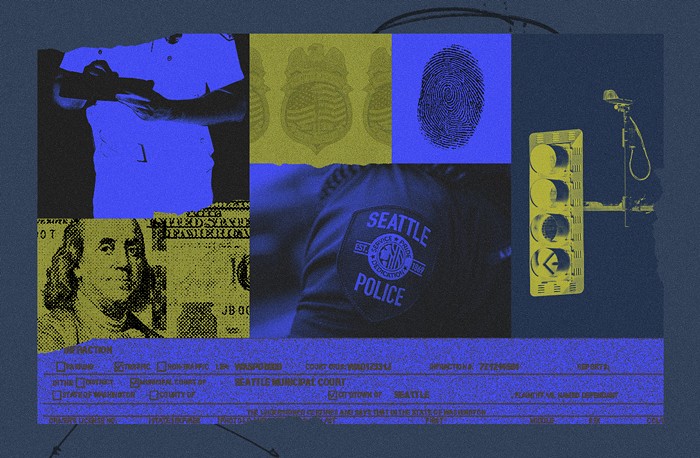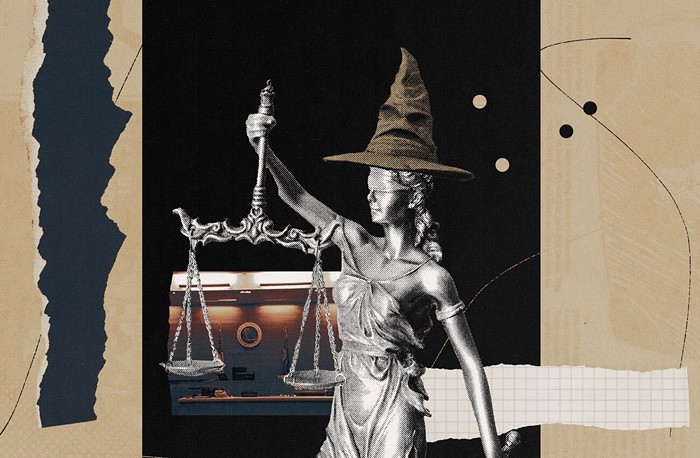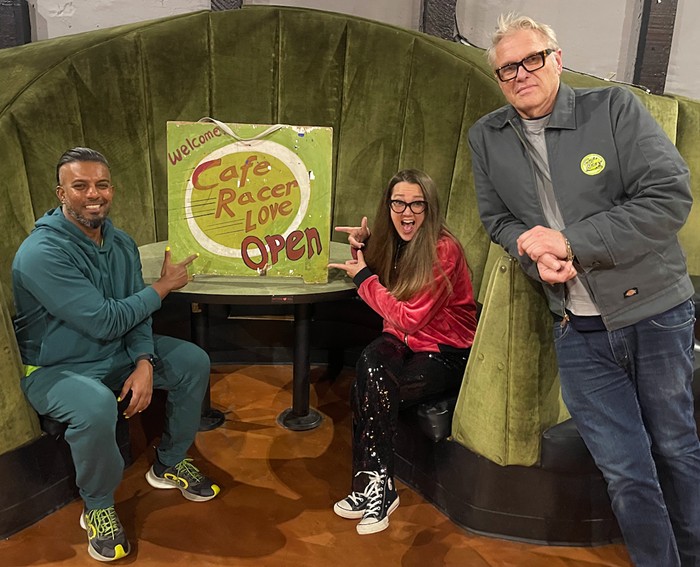As the state transportation department was releasing its initial look at the impacts of replacing the Alaskan Way Viaduct, a new group headed by onetime monorail visionary Grant Cogswell was rolling out a farsighted--and potentially contentious--viaduct proposal of its own.
The solution proposed by the new organization (known as the People's Waterfront Coalition) isn't the surface freeway advocated by folks like city council member Richard Conlin. Nor is it the $4.1 billion, six-lane waterfront tunnel backed by Seattle's urban-design aristocracy. Instead of replacing the viaduct, the new plan proposes tearing it down and replacing it with... absolutely nothing.
The idea is the brainchild of Cogswell, a current Allied Arts board member, and Cary Moon, a former member. The two split from the urban-design and arts advocacy organization out of frustration that, in Cogswell's words, the group was "just not ready to do something political. ... They're a salon, and a salon is great, but we're a political campaign." Former Allied Arts president Philip Wohlstetter, whose home in Madrona provided the backdrop for many of those very discussions, holds no ill will toward the splinter organization. He calls the new proposal "a bold choice. Politically, it's very interesting."
The plan, according to People's Waterfront Coalition co-chair Moon, is this: "Spread the traffic out at the choke points that keep traffic from moving through downtown." The proposal would accomplish that, Moon explains, largely by implementing the Central City Access Strategy. That plan, which is still under wraps at the city's transportation department, contains a street-by-street breakdown of what the city will do if the viaduct has to be shut down for a natural disaster or repairs. (The Washington Department of Transportation [WSDOT] has shored up the earthquake-damaged viaduct, but agency staff fear that soon, even those measures won't be enough.) The hope, according to Moon and Cogswell, is that a groundswell of public support for the plan will impel WSDOT to include the project--belatedly and at additional cost--in its environmental impact statement.
The coalition's plan--which does not yet have a price tag--would distribute viaduct traffic around and through downtown by synchronizing traffic lights on arterials like Second, Fourth, and Sixth Avenues; reconnecting the street grid over Aurora Avenue north of downtown, where the Mercer mess slows rush-hour traffic to a crawl; creating better links between buses, light rail, and the monorail and a adding new fleet of passenger ferries from Ballard and West Seattle; and improving access to downtown arterials like Airport Way, which Cogswell says is currently so empty at rush hour that "you could land a fucking airplane on it." Alaskan Way, now a minor tributary off the torrent of traffic that is the viaduct, would be rebuilt as a four-lane boulevard that would carry between 50,000 and 90,000 cars and trucks a day. (The plan would also redevelop the waterfront with mixed-income housing, storefronts, parks, and a downtown school.)
Currently, WSDOT estimates that between 110,000 and 120,000 vehicles use the viaduct daily; eliminating the viaduct would slash between 20 and 60 percent of that capacity. (In comparison, I-5 carries somewhere around 250,000 vehicles a day.) But Moon says such scary statistics shouldn't deter viaduct visionaries. "Right after the [2001 Nisqually] earthquake, the viaduct had only 80,000 trips a day," Moon says. "We're saying, 'So what if you can't replace 100 percent of the viaduct's capacity?' Look at how many more people you could get through downtown on I-5, on the downtown street grid, and by using transit."
Statements like that have prompted shudders in Olympia. "Our whole project is based on the premise of maintaining capacity in the [viaduct] corridor," says Maureen Sullivan, WSDOT's viaduct project manager. "There's only so much capacity in this corridor. The traffic would be maxed out all over downtown." Sullivan points out that according to WSDOT's analysis, the six-lane surface option--which assumes some of the same improvements the coalition is proposing--would slow traffic to a crawl. "If you just left the four-lane road, you'd have to take 110,000 to 120,000 vehicles a day and put them somewhere else," Sullivan says. "It doesn't all go away. It just doesn't."
Whether Sullivan is right--a study of the impact a viaduct shutdown would have on downtowntraffic is still in the works--is a matter of speculation. Transportation Choices Coalition director Peter Hurley, who opposes widening the viaduct, says that although the Central City Plan in itself "makes a lot of sense," improving transit and fixing the street grid may not be enough to justify ripping out the viaduct altogether. "I'm not certain yet whether you don't need some level of replacement," Hurley says.
On the other hand, Hurley points out that when San Francisco tore out its elevated Embarcadero Freeway, the traffic--some 80,000 vehicles--moved elsewhere or, some have speculated, simply disappeared. "The traffic projections are always worse than reality," Hurley says.
At this point, council transportation chair Conlin may be the closest thing the coalition has to an institutional supporter. And even his backing is decidedly tepid. Asked what he thought of the plan, Conlin allowed that it was "intriguing," adding, "If worse comes to worst and we don't have any money, this may be our only option." But Conlin's colleagues, already cool to his six-lane surface-highway alternative, seem unlikely to rally behind what at first glance seems like a far more radical proposal.
Already, WSDOT and tunnel advocates at the state legislature have mobilized to ensure that whatever gets built, it won't resemble the People's Waterfront Coalition's transit-heavy plan. Last month, the state legislature passed a bill that cuts off funding for the viaduct if the plan that's adopted reduces capacity on the roadway. Cogswell, who is fully aware of the legislation, is not deterred. "You know what? We're not going to let Olympia tell us we need to replace the viaduct on our waterfront," Cogswell says. "If they're going to be political about it... that's their decision, and we're going to have to forgo that money and get it from the city or the federal government." And if the people don't rise up and demand that WSDOT reconsider its five alternatives? "We're still trying to work within the system," Moon says. But if the city and state don't get on board, she adds, "We'll have no choice but to do an initiative."


















